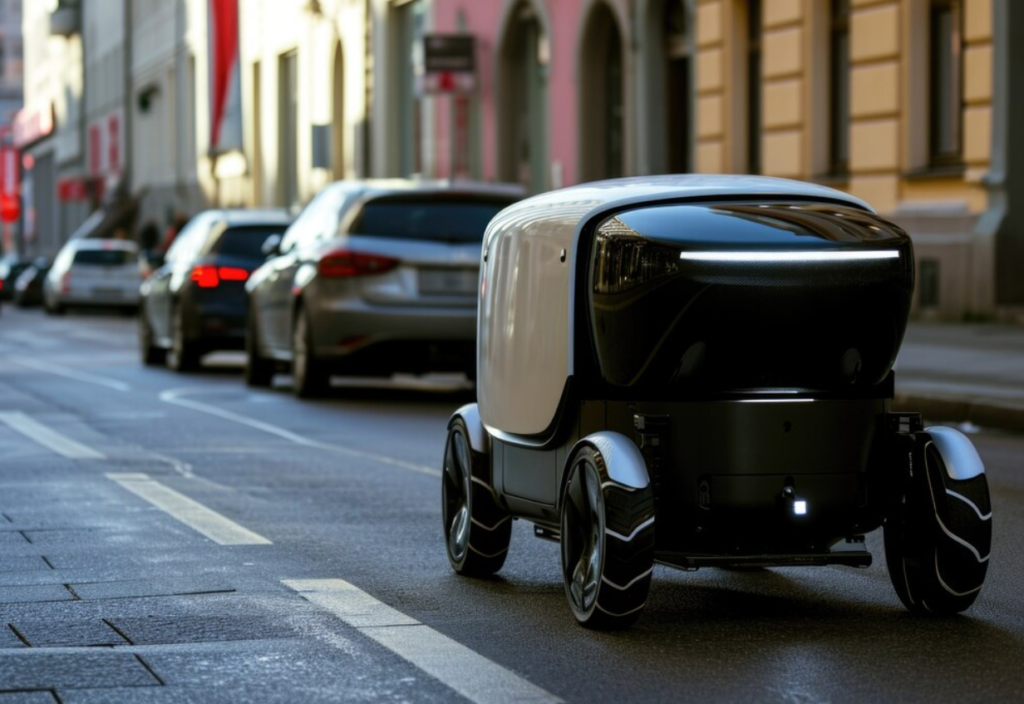AI in the automotive industry is revolutionizing transportation, driving innovation in safety, efficiency, and convenience. From autonomous vehicles to smart manufacturing, AI is reshaping how cars are built, driven, and maintained. Here’s a comprehensive look at how AI is driving the future of transportation:
1. Autonomous Vehicles (AVs)
Autonomous vehicles are the pinnacle of AI in automotive, with the potential to eliminate human error and transform mobility.
Key Components:
- Perception Systems:
AI uses data from sensors like LiDAR, cameras, and radar to detect and classify objects, such as pedestrians, vehicles, and road signs. - Decision-Making Algorithms:
Machine learning models enable vehicles to make real-time decisions, such as navigating traffic, avoiding obstacles, and following road rules. - Path Planning:
AI systems calculate the safest and most efficient routes, adapting dynamically to traffic, weather, and road conditions.
Industry Leaders:
- Tesla: Autopilot and Full Self-Driving (FSD) features.
- Waymo: Fully autonomous ride-hailing services.
- Cruise (GM): Advanced urban AV testing.
2. Advanced Driver-Assistance Systems (ADAS)
AI-powered ADAS improves safety and convenience by assisting human drivers with tasks.
Features:
- Adaptive Cruise Control (ACC): Automatically adjusts speed to maintain a safe following distance.
- Lane Keeping Assistance (LKA): Ensures the vehicle stays within its lane.
- Automatic Emergency Braking (AEB): Detects potential collisions and applies brakes.
- Driver Monitoring Systems (DMS): Uses AI to track driver attention and alertness.
3. Predictive Maintenance
AI helps predict when a vehicle might need maintenance, reducing downtime and costs.
How It Works:
- Data Analysis: AI analyzes sensor data to monitor vehicle health.
- Alerts: Predicts potential failures in components like brakes, tires, or the engine.
- Fleet Optimization: Ensures commercial fleets operate efficiently by scheduling maintenance proactively.
4. AI in Manufacturing
AI optimizes automotive manufacturing processes, enhancing efficiency and reducing costs.
Applications:
- Robotics: AI-driven robots handle tasks like welding, painting, and assembly with precision.
- Quality Control: Machine learning models detect defects in components during production.
- Supply Chain Optimization: AI predicts demand and manages inventory effectively.
5. Vehicle-to-Everything (V2X) Communication
AI enables vehicles to communicate with each other, infrastructure, and pedestrians for improved safety and traffic flow.
Types of Communication:
- Vehicle-to-Vehicle (V2V): Sharing data like speed and position to avoid collisions.
- Vehicle-to-Infrastructure (V2I): Interacting with traffic lights and road signs for smoother navigation.
- Vehicle-to-Pedestrian (V2P): Alerting pedestrians of oncoming vehicles.
6. Personalization and Infotainment
AI enhances the in-car experience by offering personalized features and entertainment.
Features:
- Voice Assistants: AI-powered assistants like Siri, Alexa, and Google Assistant help drivers control car functions hands-free.
- Personalized Settings: Adjusts seat position, climate control, and infotainment based on driver preferences.
- Recommendation Systems: Suggests routes, music, or nearby restaurants based on user habits.
7. AI for Traffic Management
AI helps manage urban traffic, reducing congestion and improving travel times.
Solutions:
- Smart Traffic Lights: Adjust signals in real-time based on traffic flow.
- Dynamic Toll Pricing: AI sets toll rates based on traffic conditions to manage demand.
- Traffic Prediction: Machine learning models predict congestion and suggest alternative routes.
8. Electric and Sustainable Mobility
AI supports the transition to electric and eco-friendly transportation.
Applications:
- Battery Management Systems (BMS): AI optimizes charging and discharging cycles to extend battery life.
- Energy Efficiency: AI helps EVs maximize range by optimizing power consumption.
- Smart Charging: Predicts energy demand and integrates with renewable energy sources.
9. AI in Fleet Management
AI-powered fleet management systems improve efficiency and safety for commercial transportation.
Features:
- Route Optimization: AI calculates the fastest and most fuel-efficient routes.
- Driver Behavior Monitoring: Tracks driver performance to ensure safe and efficient driving.
- Real-Time Tracking: Monitors fleet locations and status for better logistics management.
10. Challenges and Future Outlook
While AI is transforming the automotive industry, challenges remain:
- Safety and Reliability: AI systems must handle edge cases and unpredictable scenarios.
- Regulation and Standards: Governments must establish guidelines for AI in transportation.
- Public Trust: Building confidence in AI-driven systems is essential for adoption.
Future Trends:
- Level 5 Autonomy: Fully driverless cars capable of operating in any environment.
- Shared Mobility: AI-powered ride-sharing and robotaxi services will reduce car ownership.
- Smart Cities Integration: Seamless interaction between vehicles and urban infrastructure.
AI is driving the future of transportation, making it safer, more efficient, and sustainable. From autonomous vehicles to personalized experiences, the automotive industry is embracing AI to redefine mobility. As technology advances, AI will continue to play a central role in shaping the way we travel and interact with vehicles.




